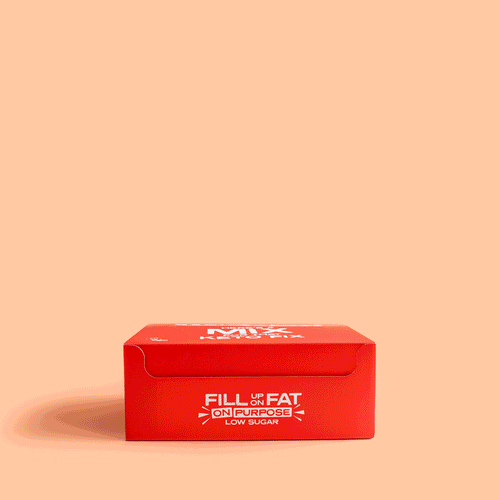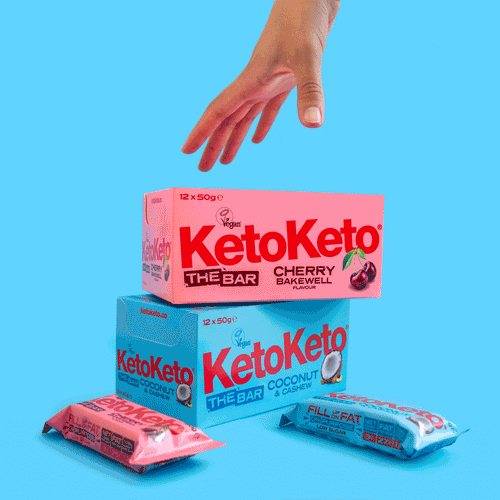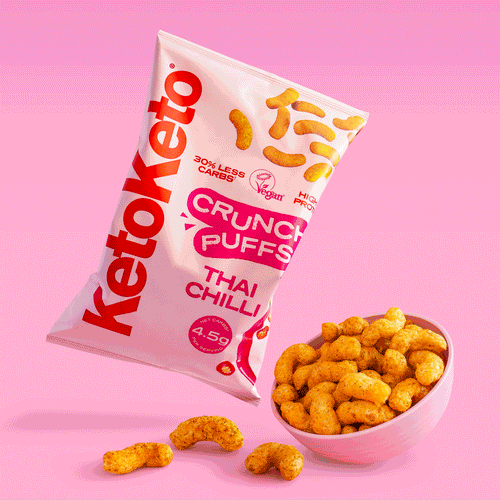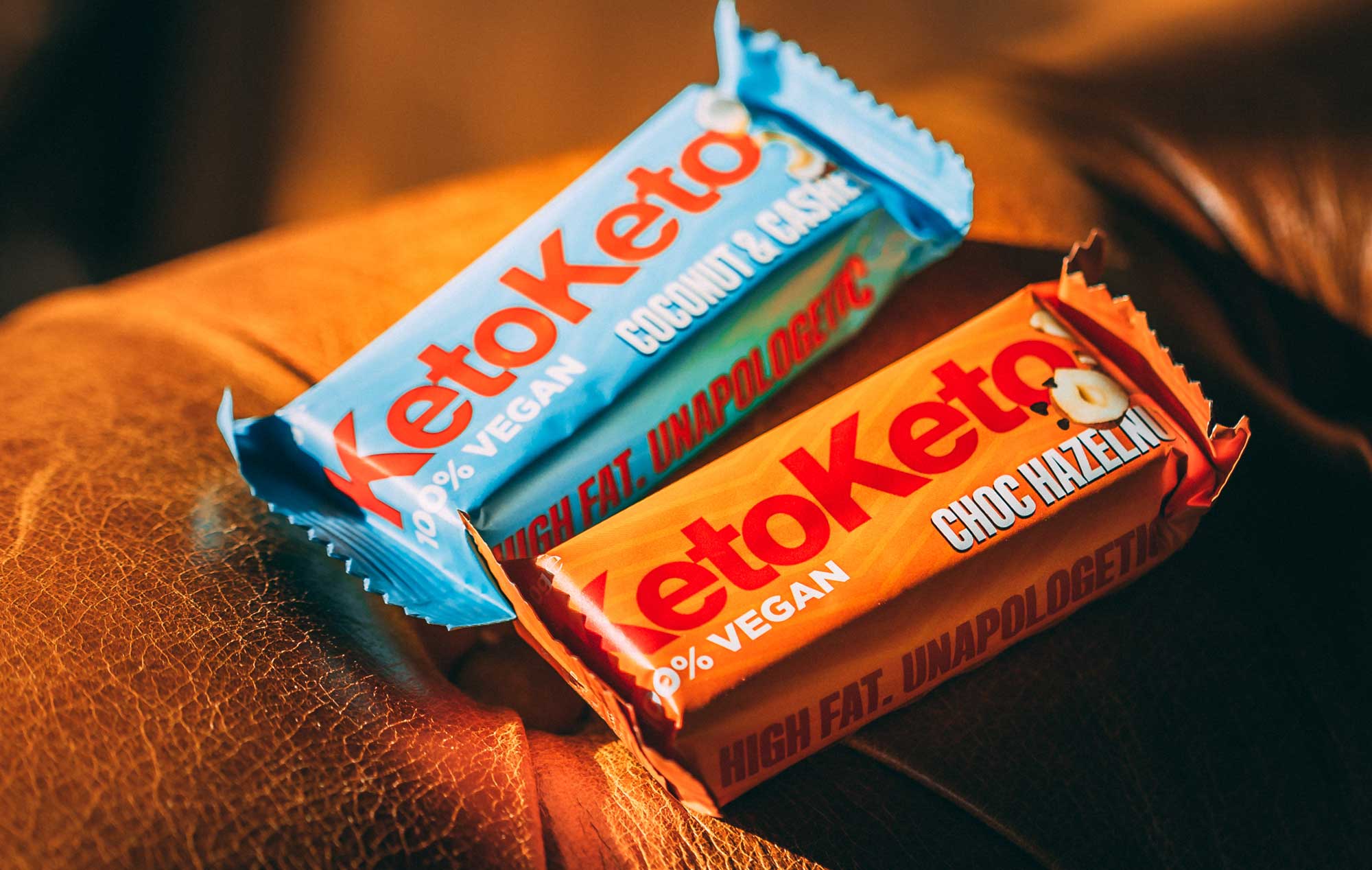The ketogenic diet, more popularly referred to as a keto diet, is a high-fat, low-carb diet that has exploded in popularity in recent years, predominantly with people trying to lose weight.
Originally developed in 1924 as a treatment for epilepsy, it’s popularity was stifled by the development of anticonvulsant drugs, but has seen as resurgence in the last two decades not only for its impact on epilepsy and weight loss, but there are also positive associations with its effect on diabetes, cancer, cognition, blood pressure, reduced hunger and Alzheimer’s disease.
What follows is a comprehensive guide for everything you need to know about the keto diet, the pros and cons of a high fat, low-carb, diet, the science behind it and how you can get started on your own ketogenic diet protocol.
What is a keto diet?
A keto diet is a diet that gets your body into a state of ketosis, where it burns fats instead of carbohydrates as a source of fuel.
It is known for having very low levels of carbs, adequate amounts of protein, whilst sourcing most of your daily calories from fat.

A typical macronutrient breakdown of the keto diet would be 70-80% of all calories from healthy fats (such as grass-fed butter, avocados, olive oil and the like), 20-30% of calories from protein, and then 5% or less of calories from carbohydrates.
This low percentage of carbs usually equates to 30-50 grams of net carbs per day - for context, this could be a lot of vegetables, or just a burger bun!
Breaking it down further, there are three main types of ketogenic diets, separated by their approach to carb intake.

Standard Ketogenic Diet:
This is as described above, no more than 50-60 grams of carbohydrates per day, on average. Usually chosen by those who want to burn fat and improve health.
Cyclical Ketogenic Diet:
This is where dieters ‘cycle’ their carbohydrates, so one-two days per week they will load up on carbohydrates to stimulate muscle growth. Usually chosen by experienced athletes who are more concerned with building muscle than losing fat.
Targeted Ketogenic Diet:
Dieters going for the targeted ketogenic diet also pursue carbohydrate loading, but in smaller amounts, right before a workout rather than any time during their eating window. Usually chosen by those who exercise regularly at high-intensities or for extended periods of time and need a boost.
How does a keto diet work?
The keto diet works by getting you into a state of ketosis.
Ketosis is a metabolic state in which your body uses fat for fuel instead of carbs.
It occurs when you significantly reduce your consumption of carbohydrates, limiting your body’s supply of glucose (sugar), which is the main source of energy for the cells.
With a ‘normal’ diet, rich in carbohydrates, your body turns those carbs into glucose which causes a spike in your blood sugar levels.
This spike in your blood sugar levels causes your body to create insulin, a hormone which transports glucose to your cells to be used for energy - commonly known as an ‘insulin spike’.
When glucose is present and available, your body will be less likely to burn off its fat stores, and as long as you still have high levels of carbohydrates, they will keep turning them into sugar and subsequently burn them for energy.
The premise of the keto diet is to remove those carbs by depleting your glycogen stores, so your body then burns its fat stores as a source for energy instead.
Your body will convert fatty acids into ketones and then your body goes into a state of ‘ketosis’, where it uses fat for fuel instead of carbohydrates.
The most effective way to enter a state of ketosis is through following a ketogenic, or keto, diet.
The other thing to note, is you must also moderate your protein consumption because protein can also be converted into glucose in excessive amounts, which could hinder your efforts to get into a state of ketosis.
There are three main ways of measuring ketones to determine if you have reached ketosis (see below), but increased thirst, decreased hunger, frequent urination and a dry mouth are all other symptoms that you may be in ketosis.
Some people practice intermittent fasting with the intention of helping them to enter ketosis faster - the most common prescription being a 16:8 ratio, so fasting for 16 hours then having an 8 hour eating window. The easiest way to do this is skip breakfast and start eating at midday and don’t eat again after 8pm.
What are ketones?
Ketones are a type of chemical that your liver produces when it breaks down fats.
When very low quantities of carbohydrates are consumed and your body enters ketosis, it begins to produce ketones from the body burning fat instead of the usual carbohydrates, for energy.
Your body uses ketones for energy typically during fasting, long periods of exercise, or when you don’t have as many carbohydrates. You can have low levels of ketones in your blood without it being a problem.
How to measure ketones?
There are three main ways of testing and measuring for ketones, ranging from cheap and easy to expensive and invasive - and of course, each has positives and negatives.
Ketones can be detected in your blood, in your breath and in your urine, and there is a testing method for each.
Blood tests measure β-hydroxybutyrate levels, breath tests measure acetone levels and urine tests measure acetoacetate levels - these are all ketones produced during fat metabolism, so elevated levels will indicate you have reached a state of ketosis.
Accuracy of the measures, price and individual factors can vary drastically across options, so you’ll need to pick whatever is best for your situation and budget.
Blood tests
A blood ketone meter is an invasive measure that requires a finger-stick to produce a very small drop of blood to be tested, but it is relatively painless and easy.
The meter will read your β-hydroxybutyrate levels, and by testing your blood, it is generally considered the most accurate measure of whether or not you are in ketosis.
If you have the budget, a blood ketone meter is the way to go.
Breath tests
Breath tests measure your acetone levels, a ketone by-product that is produced by the breath.
They are not quite as accurate as a blood ketone meter, however, are more affordable and ideal for those who are not keen on pricking their finger to draw blood.
You can test yourself an unlimited amount of times with a breathalyser, to see how different foods or exercise protocols might affect ketosis.
Urine tests
Ketone urine indicator strips are a cheap, low tech way to measure ketone levels via acetoacetate in the urine.
It consists of you urinating on strips and then seeing what colour they turn to indicate the ketone levels.
However, they are highly unreliable - especially once your body is keto-adapted - due to variations such as hydration, other biological factors and the time of the day you test.
Ketostix (ketone, urine indicator strips) – Measure ketone levels via acetoacetate in the urine, but are unreliable (particularly after you have become keto-adapted) due to variations such as hydration, time of day and other biological factors.
If you’re taking your keto diet seriously, we generally recommend to stay away from urine tests.
What are net carbs and why do they matter?
The term “net carbs” can get confusing for keto newbies. Net carbs are not the same as total carbs.
Net carbs are the total grams of carbohydrates in a food, minus the grams of fiber and sugar alcohols because these are not digested by the body.
Why do net carbs matter on a keto diet?
Because those are the carbohydrates - mostly starches and sugars - your body is processing and using for energy.
Fibre and sugar alcohols pass right through your digestive system without breaking down or being used for energy.
When putting together your keto diet plan, it is the net carbs you want to count.
To calculate net carbs, you want to look at food labels and use the following formula: Net carbs = Total carbs – fiber – sugar alcohols.

Sweeteners on a keto diet
Because being in a state of ketosis requires reducing your sugar consumption, it can become challenging to cater to that sweet tooth and sweeten various different foods, drinks, sauces and dressings.
Fortunately, there are various low-carb sweeteners - like erythritol and xylitol as we use in our KetoKeto bars - you can use to allow you to meet your sweet cravings whilst staying in ketosis.
Erythritol
Erythritol is a sugar alcohol, a sugar free sweetener (or polyol) that is naturally occurring and made from fermented corn or cornstarch. It also occurs naturally in fruits and fungi like grapes, melons and mushrooms, albeit in small quantities.
The reason we chose it as one of the sweeteners in our KetoKeto bars, is because it has 70% of the sweetness of sugar, yet is practically non-caloric, and doesn’t raise blood sugar or insulin levels, or cause tooth decay.
It is well tolerated in most people and seems to have the least adverse affects of all the low-carb sweeteners.
Xylitol
Xylitol is a naturally occurring alcohol with use as a sweetening agent dating back over 40 years, in large part due to its role in preventing tooth decay.
It occurs in many fruits and vegetables, is extracted from birch wood to make medicine, and even produced by the human body during metabolism.
Widely used as a sugar substitute, it has the same sweetness as sucrose but contains a third of the calories.
Along with erythritol, it is our sweetener of choice for KetoKeto bars.

The KetoKeto Mix Box
When we set out to create the perfect Keto Snack, our aim was to develop a bar that was truly low in net carbs, free from sugar and high in good fat! Grab a mix of every flavour
Stevia
Stevia is a natural sweetener and sugar substitute derived from the leaves of the plant species Stevia rebaudiana, native to Brazil and Paraguay.
Available in both liquid and powdered form, it contains little to no calories or carbs, and has been shown to possibly help lower blood sugar levels.
Stevia is much sweeter than regular sugar, and as a result, recipes with stevia require far less of its sugar equivalent to achieve the same flavour; only 1 teaspoon of powdered stevia is equal to 1 cup of sugar.
Sucralose
Sucralose is an artificial sweetener that passes through your body undigested (i.e. unmetabolised) and provides no calories or carbs.
The brand ‘Splenda’ is the most common sucralose-based sweetener you will find in your local supermarket or grocers, however, it is not calorie-free like pure sucralose, and contains maltodextrin and dextrose which contain calories and carbs.
Unlike a lot of its sweetener counterparts, sucralose is not a suitable substitute for sugar in baked goods, as it can produce harmful compounds at high temperatures.
Pure sucralose is hundreds of times sweeter than regular sugar so it only needs a tiny amount to be used in place of sugar with foods.
Monk Fruit Sweetener
Also called monk fruit extract, it is natural, and contains zero calories whilst being 100-250 times sweeter than sugar.
Along with zero calories, it has zero carbohydrates, zero sodium and zero fat. Despite have been around for decades, it is growing in popularity as it is becoming more accessible and readily available.
Yacon Syrup
Extracted from the roots of the yacon plant, originating in the northern and central Andes from Colombia to northern Argentina, yacon syrup is a sweet-tasting syrup that a lot of people liken to molasses or caramelised sugar.
The crisp, sweet-tasting, tuberous root extract was originally used by the Incas in Peru - it has very few calories along with low sugar levels.
Made up of fructo-oligosaccharides (FOS), inulin and a small amount of glucose and fructose, it can help with digestion, and help provide a food source for the fermentation of beneficial bacteria in the gut.
However, too much can lead to abdominal pain, gas, bloating and diarrhoea.
What foods to eat and avoid on a keto diet
Now we have gone through the basics of the keto diet, it’s time to go through the lists of foods to buy and avoid when it comes to doing your weekly shopping list.
Foods to eat on the keto diet
High fat, nutrient dense and low carb are all ideal characteristics of the food you want to be eating on the keto diet.
Meats, eggs, nuts and seeds are a staple, along with leafy greens, oils, butters and creams.
You should - where possible - always be choosing the highest quality options you can afford; grass fed and organic meats, wild caught fish and pasture-raised chicken, pork and eggs.
Additionally, look for whole-fat and organic dairy, avoiding low-fat or fat free dairy products, and of course, products with high sugar content.
Keto-Friendly Meats
- Beef: Ground beef, steak, veal, stews, roast
- Pork: Ham, ground pork, pork loin, pork chops, tenderloin, bacon
- Poultry: Chicken, turkey, wild game, duck,
- Goat & lamb
- Organ meats: Kidney, liver, heart, tongue, offal
- Bone broth: beef bone broth and chicken bone broth
Keto-Friendly fish and shellfish
- Mackerel, Salmon, Catfish
- Cod, Tuna, Trout, Haddock, Halibut
- Oysters, Sardines, Flounder
- Clams, Crab, Mussels, Lobster
Keto-friendly egg and dairy
- Eggs (fried, scrambled, boiled)
- Grass-fed butte, Ghee, Lard
- Heavy cream, Heavy whipping cream
- Yoghurt, Kefir, Sour cream
- Provolone cheese, Gouda cheese, Colby cheese, Swiss cheese
- Soft cheeses: cream cheese, goat cheese, blue cheese gouda, brie, buffalo mozzarella, camembert
Keto-friendly nuts & seeds
- Almonds, Brazil nuts, Hazelnuts
- Walnuts, Macadamia nuts, Pecan nuts
- Nut butters
- Chia seeds, Flaxseed, Pumpkin seeds
Keto-Friendly Vegetables
- Asparagus, Aubergine, Avocados
- Bell Peppers, Broccoli, Brussell Sprouts
- Cabbage, Caulifower, Celery, Collard Greens
- Courgette, Cucumbers, Green beans
- Kale, Kimchi, Lettuce, Mushrooms, Mustard leaves
- Radishes, Sauerkraut, Spinach, Swiss Chard
Keto-Friendly Fruit
- Blackberries, Blueberries
- Cranberries, Raspberries
- Strawberries
Keto-friendly oils and condiments
- Avocado Oil, Olive Oil
- Broth and bouillon
- Canola Oil
- Coconut butter, Coconut Oil
- Flaxseed Oil
- Herbs and spices: basil, cilantro, cinnamon black pepper, cloves, coriander, ginger powder, garam masala, mint, parsley tarragon Mayonnaise
- MCT Oil/Powder
- Sesame Seed Oil
- Tallon
- Vinegars: cider, white and red wine vinegar
- Walnut Oil
Foods to avoid on the keto diet
It goes without saying that anything high in carbs is a no-go on the keto diet. I would advise cleaning your house out when first starting the diet - you want to remove all temptation.
It’s easy to say no to that doughnut in the fridge on day 1 when you are feeling fired up and motivated, but a couple of weeks in and a moment of a weakness is all it takes.
Grains
The advice here is just to stay away from grains due to their high carbohydrate content; wheat, pasta, corn, rice, oats, quinoa, whole grains and the like - keep away!
Beans and legumes
Despite being a good protein source, beans and legumes are also incredibly high carb. Lentils, chickpeas, blackbeans and kidney beans are all off the keto menu.
High sugar fruits
Though there are benefits of many fruits, such as antioxidants and other micronutrients, their high fructose content can quite easily kick you out of ketosis. In general, stay away from all fruits, except small amounts of berries.
Starchy vegetables
The high carb content of starchy vegetables make them another food to avoid. The likes of potatoes, carrots, sweet potatoes, and parsnips should all be avoided.
Sugar
Perhaps an obvious one, but it should go without saying, avoid sugar like the plague. All desserts, fizzy drinks, fruit juice, crisps, chocolate bars, sweets, ice cream, cakes and all your other sugary vices are out of the question. Beware of condiments like ketchup and bbq sauce (and even balsamic vinegar), which also usually have high sugar count.
Alcohol
When drinking alcohol whilst on keto, your liver will focus on metabolising the alcohol instead of fat and with it, reducing your ability to produce ketones from fat. Slowing down the fat burning process will slow your path to weight loss.
Some alcohol that is low in carbs may be permissible - it is very much about learning what works from you - the likes of champagne or dry sparkling wine, dry wine or even whiskey do not kick some people out of ketosis.

Save big with a Box Combo!
When we set out to create the perfect Keto Snack, our aim was to develop a bar that was truly low in net carbs, free from sugar and high in good fat! One that didn't kick you out of ketosis!
Shop NowTo Conclude
For many, switching to a keto diet is the best thing they have ever done.
Though it can be a little hard to get your head around at first, if you can nail it, it can have a monumental impact on your health.
The transition to ketosis can be difficult, but the growing popularity and resurgence of the keto diet is making it easier by the day to find available low-carb/high-fat foods - like our KetoKeto bars - make sure you try one now!






